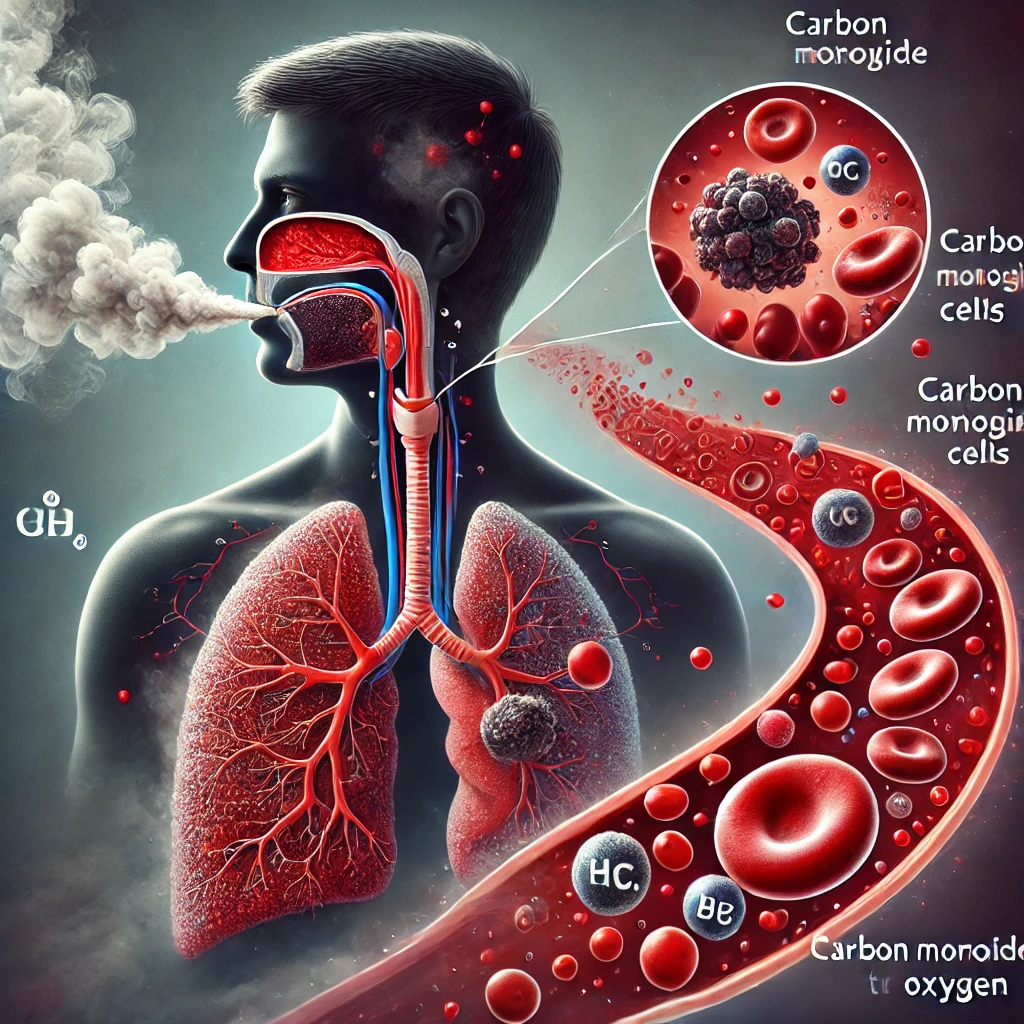Fatty liver disease, once considered a rare condition, has emerged as a significant health concern affecting millions worldwide. This “silent epidemic” often goes unnoticed until it progresses to more severe stages, making awareness and early intervention crucial. In this comprehensive guide, we’ll explore the causes, symptoms, diagnosis, and management of fatty liver disease, empowering you with the knowledge to protect your liver health.
What is Fatty Liver Disease?
Fatty liver disease, as the name suggests, occurs when excess fat accumulates in liver cells. While it’s normal for the liver to contain some fat, problems arise when fat makes up more than 5-10% of the liver’s weight (Chalasani et al., 2018). There are two main types of fatty liver disease:
- Nonalcoholic Fatty Liver Disease (NAFLD): This type is not related to alcohol consumption and is the most common form of chronic liver disease in developed countries.
- Alcoholic Fatty Liver Disease: This type is caused by excessive alcohol consumption.
For this article, we’ll focus primarily on NAFLD, given its increasing prevalence and impact on public health.
The Rising Tide of NAFLD
NAFLD has become increasingly common in recent decades, paralleling the rise in obesity and type 2 diabetes. It’s estimated that NAFLD affects about 25% of the global population, with higher rates in Western countries (Younossi et al., 2019). What’s particularly alarming is the disease’s presence in children and adolescents, with an estimated prevalence of 7.6% in the general pediatric population and up to 34.2% in obese children (Anderson et al., 2015).
Understanding the Spectrum of NAFLD
NAFLD encompasses a spectrum of liver conditions, ranging from simple fatty liver (steatosis) to more severe forms:
- Simple Fatty Liver (Steatosis): Fat accumulates in liver cells but causes little or no inflammation or liver damage.
- Nonalcoholic Steatohepatitis (NASH): Fat accumulation is accompanied by inflammation and liver cell damage.
- Fibrosis: Persistent inflammation leads to scarring of the liver tissue.
- Cirrhosis: Extensive scarring replaces healthy liver tissue, potentially leading to liver failure.
- Hepatocellular Carcinoma: In rare cases, NAFLD can progress to liver cancer.
Risk Factors and Causes
While the exact cause of NAFLD is not fully understood, several risk factors have been identified:
- Obesity: Excess body fat, especially around the waist, is strongly associated with NAFLD (Younossi et al., 2019).
- Insulin Resistance and Type 2 Diabetes: These conditions alter how the body processes and stores fat (Tilg et al., 2017).
- Metabolic Syndrome: A cluster of conditions including high blood pressure, high blood sugar, excess body fat around the waist, and abnormal cholesterol levels.
- Genetics: Certain genetic variations may increase susceptibility to NAFLD (Anstee et al., 2020).
- Age and Gender: NAFLD is more common in older adults and men, although it can affect people of all ages and genders.
- Diet: High intake of fructose, saturated fats, and processed foods may contribute to NAFLD development (Jensen et al., 2018).
The Silent Nature of NAFLD
One of the most challenging aspects of NAFLD is its asymptomatic nature in the early stages. Most people with fatty liver disease have no symptoms, which is why it’s often called a “silent” disease. However, as the condition progresses, some individuals may experience:
- Fatigue
- Discomfort or pain in the upper right abdomen
- Enlarged liver
- Elevated liver enzymes in blood tests
It’s important to note that these symptoms are nonspecific and can be associated with many other conditions, underscoring the importance of regular check-ups and liver function tests for at-risk individuals.
Diagnosis: Unveiling the Hidden Threat
Given the asymptomatic nature of early NAFLD, diagnosis often occurs incidentally during tests for other conditions. The diagnostic process typically involves:
- Medical History and Physical Examination: Your doctor will ask about your medical history, lifestyle, and perform a physical exam.
- Blood Tests: Liver function tests can reveal elevated liver enzymes, which may indicate liver damage.
- Imaging Tests: Ultrasound, CT scans, or MRI can detect fat in the liver.
- Liver Biopsy: While not always necessary, a liver biopsy is the gold standard for diagnosing NASH and determining the extent of liver damage (Chalasani et al., 2018).
- Non-invasive Tests: New techniques like transient elastography (FibroScan) can assess liver stiffness and fat content without the need for a biopsy (Castera et al., 2019).
Treatment and Management: A Multifaceted Approach
Currently, there is no FDA-approved medication specifically for NAFLD. However, management focuses on addressing the underlying causes and preventing disease progression:
- Lifestyle Modifications:
- Weight Loss: A 7-10% reduction in body weight can significantly improve liver health (Vilar-Gomez et al., 2015).
- Dietary Changes: Adopting a Mediterranean diet or a diet low in processed foods and high in fruits, vegetables, and whole grains can be beneficial (Ryan et al., 2013).
- Regular Exercise: Both aerobic exercises and resistance training can help reduce liver fat (Hashida et al., 2017).
- Managing Comorbidities:
- Treating conditions like diabetes, high cholesterol, and hypertension is crucial in NAFLD management.
- Medications:
- While no drugs are specifically approved for NAFLD, some medications used for diabetes (like pioglitazone) or vitamin E supplements may be prescribed in certain cases (Chalasani et al., 2018).
- Avoiding Hepatotoxins:
- Limiting alcohol consumption and avoiding unnecessary medications that may stress the liver.
- Regular Monitoring:
- Periodic liver function tests and imaging studies to track disease progression.
Emerging Therapies and Future Directions
The field of NAFLD research is rapidly evolving, with several promising therapies in clinical trials:
- FXR Agonists: Drugs like obeticholic acid show promise in improving liver fibrosis (Younossi et al., 2019).
- GLP-1 Receptor Agonists: Originally developed for diabetes, these drugs may also benefit NAFLD patients (Armstrong et al., 2016).
- Thyroid Hormone Receptor β Agonists: These compounds may help reduce liver fat and improve metabolic parameters (Harrison et al., 2019).
- Antifibrotic Agents: Drugs targeting liver fibrosis are in development and may help prevent progression to cirrhosis.
Prevention: The Best Medicine
Given the challenges in treating advanced NAFLD, prevention remains the most effective strategy:
- Maintain a Healthy Weight: Achieve and maintain a healthy BMI through balanced diet and regular exercise.
- Eat a Balanced Diet: Focus on whole foods, limit processed foods, and moderate alcohol intake.
- Stay Active: Regular physical activity helps maintain a healthy weight and improves insulin sensitivity.
- Manage Chronic Conditions: Keep diabetes, high cholesterol, and hypertension under control.
- Regular Check-ups: Periodic health screenings can help detect NAFLD early.
Conclusion: A Call to Action
Fatty liver disease, particularly NAFLD, represents a significant health challenge of our time. Its silent progression and potential for severe complications make it a condition we cannot afford to ignore. By understanding the risk factors, adopting healthy lifestyle choices, and staying vigilant with regular check-ups, we can combat this epidemic and protect our liver health.
Remember, your liver is a resilient organ with a remarkable capacity for regeneration. It’s never too late to start taking steps towards a healthier liver. Whether you’re at risk, newly diagnosed, or simply health-conscious, the power to safeguard your liver health lies in your hands. Let’s work together to turn the tide on fatty liver disease and pave the way for a healthier future.
Written by : Farokh Shabbir
References
Anderson, E. L., Howe, L. D., Jones, H. E., Higgins, J. P., Lawlor, D. A., & Fraser, A. (2015). The Prevalence of Non-Alcoholic Fatty Liver Disease in Children and Adolescents: A Systematic Review and Meta-Analysis. PloS one, 10(10), e0140908.
Armstrong, M. J., Gaunt, P., Aithal, G. P., Barton, D., Hull, D., Parker, R., … & Newsome, P. N. (2016). Liraglutide safety and efficacy in patients with non-alcoholic steatohepatitis (LEAN): a multicentre, double-blind, randomised, placebo-controlled phase 2 study. The Lancet, 387(10019), 679-690.
Castera, L., Friedrich-Rust, M., & Loomba, R. (2019). Noninvasive Assessment of Liver Disease in Patients With Nonalcoholic Fatty Liver Disease. Gastroenterology, 156(5), 1264-1281.e4.
Chalasani, N., Younossi, Z., Lavine, J. E., Charlton, M., Cusi, K., Rinella, M., … & Sanyal, A. J. (2018). The diagnosis and management of nonalcoholic fatty liver disease: Practice guidance from the American Association for the Study of Liver Diseases. Hepatology, 67(1), 328-357.
Harrison, S. A., Bashir, M. R., Guy, C. D., Zhou, R., Moylan, C. A., Frias, J. P., … & Sanyal, A. J. (2019). Resmetirom (MGL-3196) for the treatment of non-alcoholic steatohepatitis: a multicentre, randomised, double-blind, placebo-controlled, phase 2 trial. The Lancet, 394(10213), 2012-2024.
Hashida, R., Kawaguchi, T., Bekki, M., Omoto, M., Matsuse, H., Nago, T., … & Torimura, T. (2017). Aerobic vs. resistance exercise in non-alcoholic fatty liver disease: A systematic review. Journal of hepatology, 66(1), 142-152.
Jensen, T., Abdelmalek, M. F., Sullivan, S., Nadeau, K. J., Green, M., Roncal, C., … & Johnson, R. J. (2018). Fructose and sugar: A major mediator of non-alcoholic fatty liver disease. Journal of hepatology, 68(5), 1063-1075.
Ryan, M. C., Itsiopoulos, C., Thodis, T., Ward, G., Trost, N., Hofferberth, S., … & Wilson, A. M. (2013). The Mediterranean diet improves hepatic steatosis and insulin sensitivity in individuals with non-alcoholic fatty liver disease. Journal of hepatology, 59(1), 138-143.
Tilg, H., Moschen, A. R., & Roden, M. (2017). NAFLD and diabetes mellitus. Nature reviews Gastroenterology & hepatology, 14(1), 32-42.
Vilar-Gomez, E., Martinez-Perez, Y., Calzadilla-Bertot, L., Torres-Gonzalez, A., Gra-Oramas, B., Gonzalez-Fabian, L., … & Romero-Gomez, M. (2015). Weight loss through lifestyle modification significantly reduces features of nonalcoholic steatohepatitis. Gastroenterology, 149(2), 367-378.e5.
Younossi, Z. M., Koenig, A. B., Abdelatif, D., Fazel, Y., Henry, L., & Wymer, M. (2016). Global epidemiology of nonalcoholic fatty liver disease-Meta-analytic assessment of prevalence, incidence, and outcomes. Hepatology, 64(1), 73-84.
Younossi, Z. M., Ratziu, V., Loomba, R., Rinella, M., Anstee, Q. M., Goodman, Z., … & REGENERATE Study Investigators. (2019). Obeticholic acid for the treatment of non-alcoholic steatohepatitis: interim analysis from a multicentre, randomised, placebo-controlled phase 3 trial. The Lancet, 394(10215), 2184-2196.











